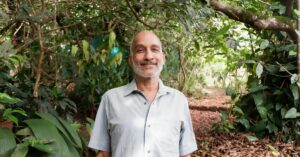Pune Woman Collects Dry Leaves So They’re Not Burnt. And Then She Does More!
Not letting the leaves be burnt was okay, but what would she do with the piles that gathered every day in her compound?
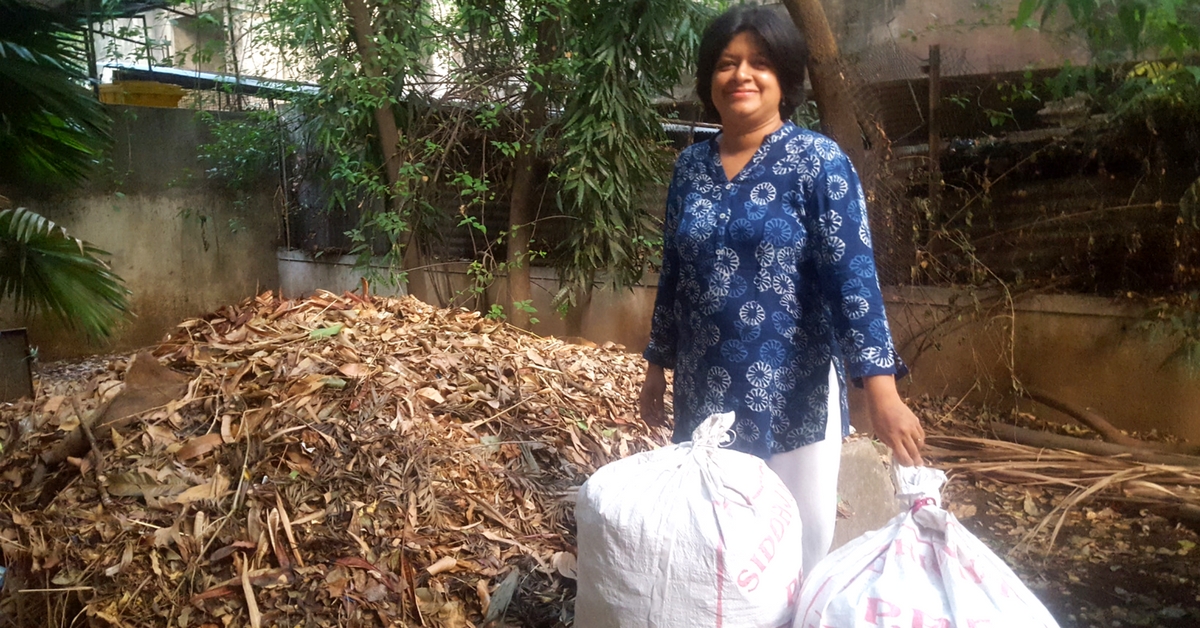
Aditi Deodhar envisions an India where not a single dry leaf is burnt. With this in mind, the environmental-conscious software consultant launched a forum called ‘Brown Leaf’ in Pune. It is a platform connecting people who have brown leaves to dispose to people who need them. From just November 2016 to April 2017, the forum has been able to stop 5,000 gunny bags of dry leaves from being burnt.
The leaves are instead used for mulching or composting.
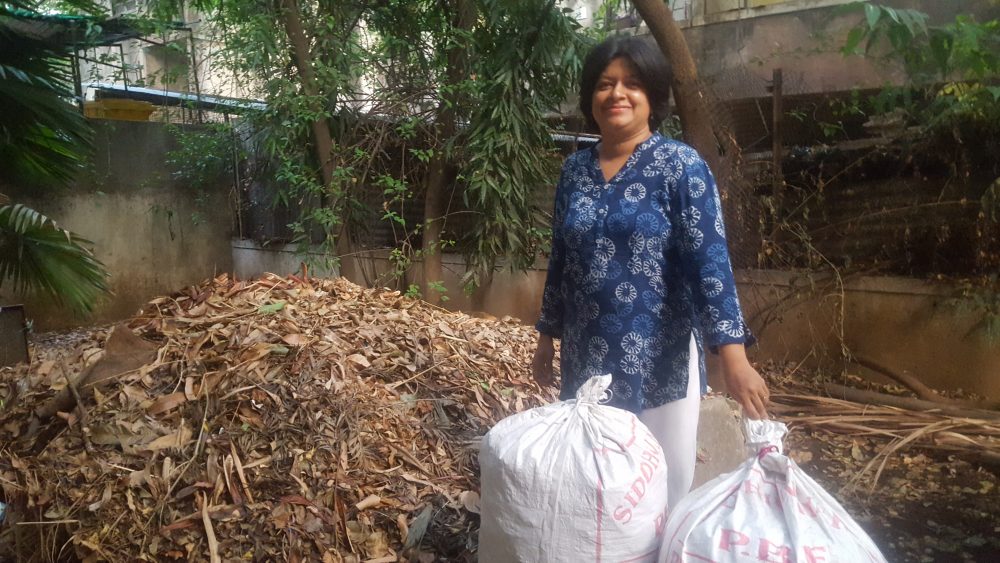
The journey to achieve zero-burning started in January 2016 for Aditi, a postgraduate in Mathematics. However, she had made her foray into environmental activities with the founding of Jeevit Nadi, an organisation which has been working on reviving Pune rivers since January 2014, after a course in the Ecological Society, Pune.
The pollution caused due to the burning of leaves and the rich organic matter that is lost bothered her. Not letting the leaves be burnt was okay, but what would she do with the piles that gathered every day in her compound?
This is when she met urban cultivator Sujata Naphade, who needed the leaves. The two women quickly filled five gunny bags and transported them to Sujata’s vegetable plot.
During their interaction Sujata said that the five bags were useful, but she needed even more leaves to form compost for her plants.
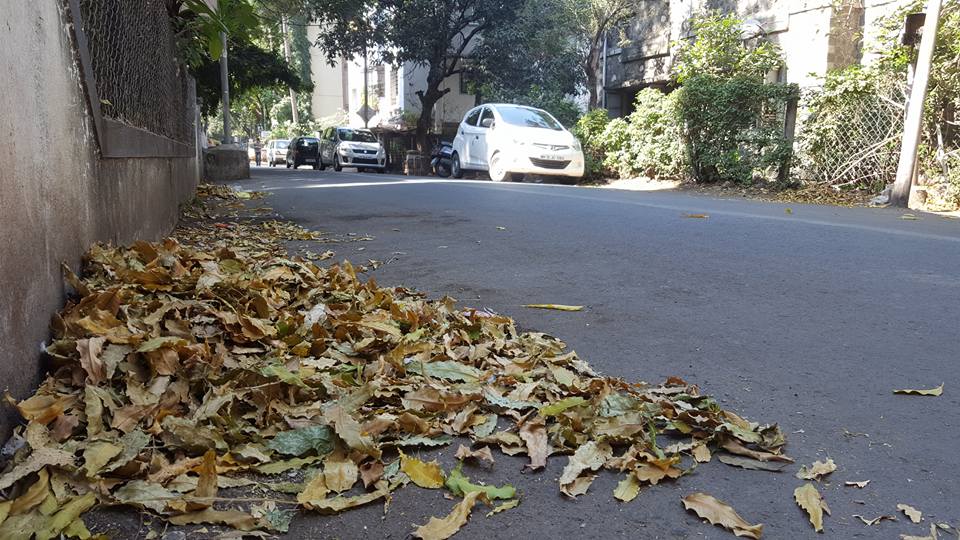
This was when Aditi realised how useful the leaf ‘litter’ was. “There is no concept of waste in nature. It’s only in the urban landscape that we’ve formed this concept,” says Aditi. Trees shed leaves from November to April to conserve water. The fallen leaves form a protective layer on the soil, which conserve moisture through the summer. Insects and earthworms find shelter under these leaves. They decompose in the monsoon and are returned to the soil, adding nutrients to it. This method is called mulching.
The other way of using brown leaves is to form compost by making piles of leaves and watering them. Your compost will be ready in six months. Aditi has put up a detailed guide for composting dry leaves on her website. This free document comes with a request: Circulate it so that it reaches more people. She uses both composting and mulching for her terrace garden.
“This method of using brown leaves to make compost is not exactly cyclical, but we can go very close to the natural process,” says the 37-year-old.
And if you can’t do either? Then donate. Sujata’s case showed Aditi that there’s both availability and requirement of the leaves for mulching and composting. With this in mind, she started her website. Then came a Facebook page and she even tried marking donors and receivers on Google maps. But the best connector was the WhatsApp group, which now has 200 people. The purview of the WhatsApp group has expanded to seed exchange and tips on gardening.
“We are considering including exchange of nirmalya (which includes flowers, fruits, other biodegradable puja items). Wet garbage has nitrogen content. Dry leaves have carbon. If both are put together, the compost is of better quality,” she says.
The entire exercise of donating and receiving leaves does not involve money. “Goodwill must be the driving factor. It won’t work on monetary principles. Besides, we have come to a stage where knowledge exchange and interaction is very valuable,” says Aditi. The person who takes the leaves has to just replace the gunny bags. “We have formed an excellent community now.”
The group has a variety of donors and takers: farmers, gardening enthusiasts, housing societies with old growth trees, companies and even a school.
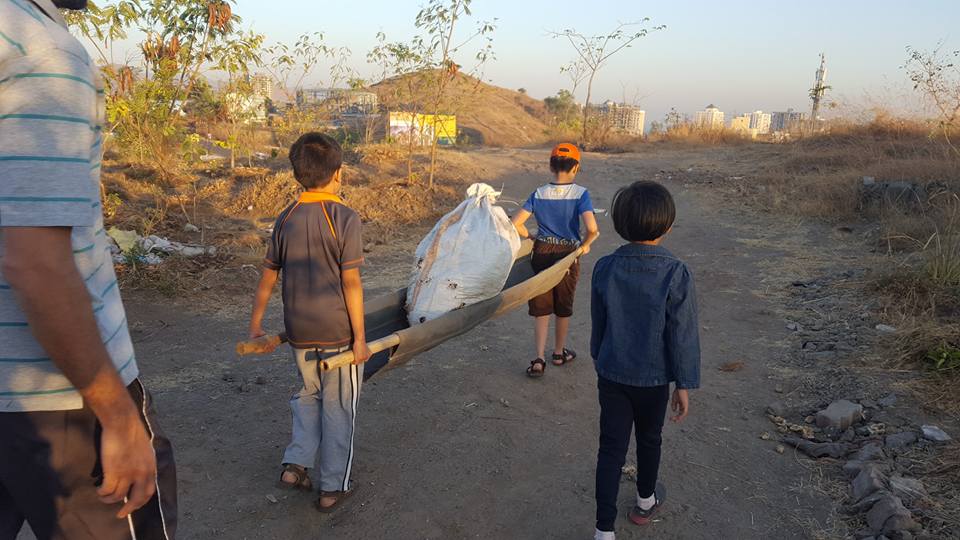
Aditi has learned from the advice shared on the group. Some people were asking for leaves of native trees for composting. “Leaves of exotic plants don’t have enemies. Bacteria don’t recognise them. Trees like the straight ashoka, nilgiri and exotic bamboo are exotic varieties, so their composting is very slow,” she explains. “Some people say the quality of compost from exotic leaves isn’t good. They want only native plants. But in reality, exotics are much better for mulching as the leaves last for a whole season.”
Aditi has received pleas of help from Hyderabad, Bangalore, Nashik and Delhi. Two corporators from Pune also contacted her for guidance in their areas.
With so many people willing to exchange, she took the next step for the platform – a mobile app named Brown Leaf.

She taught herself to make applications for the Android platform, and launched a beta version at the end of September. “There will be no need of a coordinator once the app starts functioning,” says Aditi. The app is currently being tested for donors in Pune, where Aditi lives with her husband and son. The final version of the app will be launched in mid-October. The app might also be released in Bengaluru at a later stage, where she is in touch with a brown leaf enthusiast.
However, Aditi does not want to create a parallel system for utilising brown leaves. But the Pune Municipal Corporation (PMC) does not have the capacity to dispose all the leaf litters. So the next step for her is to set up four metal composters in her lane and work with the PMC staff to create and sell compost. The earnings from the sale will be distributed to the municipal personnel who work with her. She plans to run this as a pilotproject, and has started a fundraiser for support.
Aditi got PMC worker Pritam in her lane to collect and store dry leaves in gunny bags for her, which she used to form compost, while donating the remaining. “Collecting the leaves in a pile was a fire hazard and looked messy. So I thought of these containers,” says Aditi.
They will start with one composter at the end of October, and have all four installed and composting by the end of January next year. The idea is to create a decentralised model for useful disposal of leaf litter, which is otherwise taken to dump sites. This model utilises the existing system without creating a new one. It is also scalable. Taking the lane as the unit, it can be replicated in all of Pune.
You can contribute to Aditi’s project here.
Like this story? Or have something to share?
Write to us: [email protected]
Connect with us on Facebook and Twitter.
NEW: Click here to get positive news on WhatsApp!
This story made me
- 97
- 121
- 89
- 167
Tell Us More
We bring stories straight from the heart of India, to inspire millions and create a wave of impact. Our positive movement is growing bigger everyday, and we would love for you to join it.
Please contribute whatever you can, every little penny helps our team in bringing you more stories that support dreams and spread hope.






